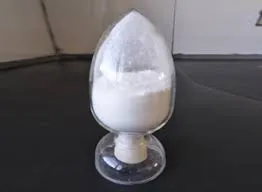Ethylene glycol diacetate
In the dynamic world of plastics, additives play a crucial role in enhancing the material properties to meet diverse industrial requirements. These chemicals and compounds are incorporated into plastics during the manufacturing process, offering improvements in durability, flexibility, longevity, and safety. Understanding plastic additives from a product-focused perspective provides a pathway to creating superior plastic solutions that resonate with industry demands.
Plastic additives can be broadly categorized based on their function stabilizers, plasticizers, flame retardants, impact modifiers, and antioxidants. Each category serves to address specific performance and safety requirements. For manufacturers, selecting the right combination of additives is paramount in achieving the desired balance between product performance and cost-effectiveness.
Stabilizers, for instance, are indispensable for enhancing heat and UV resistance, making plastics more durable in harsh environments. This category includes UV stabilizers which are particularly important for outdoor plastic products. UV rays from the sun can degrade the plastic, leading to discoloration, loss of mechanical properties, and brittleness. Choosing the right UV stabilizer can significantly extend the lifespan of products like automotive components, outdoor furniture, and packaging materials.
Plasticizers are vital for providing flexibility and softness, commonly used in products such as cables, hoses, and footwear. The challenge here lies in selecting non-toxic, environmentally friendly plasticizers that comply with international safety standards without compromising performance. Phthalates have historically been popular plasticizers, but due to health concerns, the industry is shifting towards safer alternatives like citrate esters and bio-based plasticizers. Forward-thinking manufacturers invest in research and development to innovate sustainable plasticizer solutions that meet regulatory requirements while satisfying consumer demand for greener products.
Flame retardants are critical for enhancing fire safety in plastics used in construction, electronics, and transportation. This category of additives works by interrupting combustion and inhibiting the spread of fire. With heightened awareness around fire safety and increasing regulatory pressures, manufacturers are exploring non-halogenated flame retardants that are less harmful to human health and the environment. Aluminum hydroxide and magnesium hydroxide are emerging as effective solutions that provide the necessary fire resistance without the adverse effects associated with traditional halogenated compounds.list of plastic additives
Impact modifiers are another essential class of additives used to improve the toughness and durability of plastics. They are especially crucial in automotive and electronic industries, where resilience to mechanical stress is paramount. Manufacturers keen on producing high-performance products are investing in modifiers that enhance impact resistance without sacrificing processability or clarity. Recent advancements in nanotechnology are paving the way for even more efficient impact modifiers that offer superior performance at lower concentrations, resulting in cost savings and enhanced product quality.
Antioxidants play a vital role in preventing the degradation of plastics due to oxidation, which can occur during processing and throughout the product's lifecycle. They are crucial in preserving the physical and mechanical properties of plastics in applications ranging from food packaging to automotive parts. For manufacturers, selecting antioxidants that are effective at low concentrations and do not interfere with the processing or final use of the product is a primary focus. Innovative solutions in this domain include the development of multifunctional antioxidants that combine stabilizing features with environmental benefits.
To excel in the competitive market, businesses must prioritize an integrated approach to selecting and applying plastic additives. This requires staying abreast of cutting-edge research, engaging with industry leaders, and continuously evaluating material performance against evolving consumer expectations and regulatory landscapes. By doing so, manufacturers not only enhance product quality and performance but also solidify their reputation as leaders in responsible manufacturing practices.
In conclusion, the strategic use of plastic additives is a sophisticated craft that blends science, innovation, and foresight. It shapes the quality, safety, and sustainability of plastic products that we rely on every day. By leveraging the expertise of materials scientists, chemists, and engineers, companies can transform raw plastics into highly functional, market-ready products that stand the test of time and regulation. With an unwavering commitment to innovation and sustainability, the future of plastic manufacturing is set to be more efficient, eco-friendly, and aligned with societal needs than ever before.
More product recommendations



